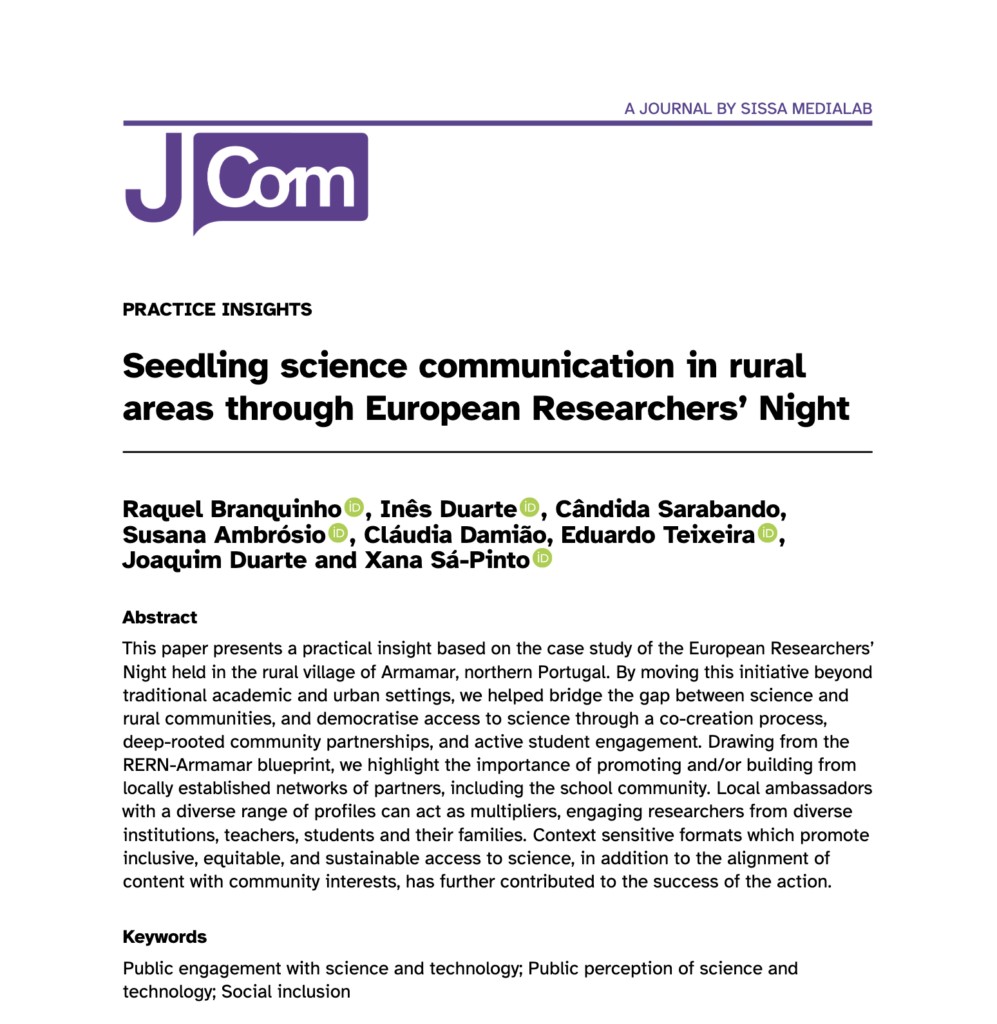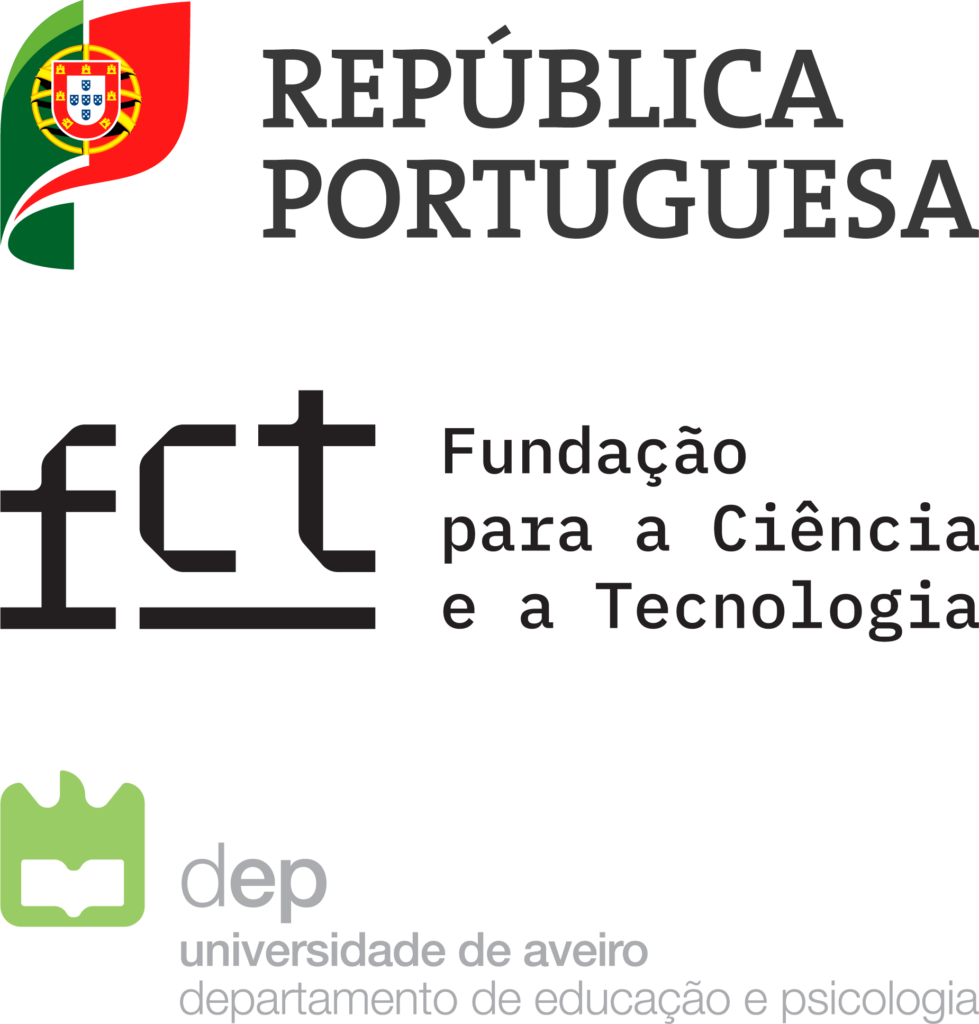Raquel Branquinho, Maria Inês Duarte, Cândida Sarabando, Susana Ambrósio (CIDTFF), Cláudia Damião, Eduardo Teixeira, Joaquim Duarte, & Xana Sá-Pinto (CIDTFF) | Journal of Science Communication, 24(4), N01
Abstract:
This paper presents a practical insight based on the case study of the European Researchers’ Night held in the rural village of Armamar, northern Portugal. By moving this initiative beyond traditional academic and urban settings, we helped bridge the gap between science and rural communities, and democratise access to science through a co-creation process, deep-rooted community partnerships, and active student engagement. Drawing from the RERN-Armamar blueprint, we highlight the importance of promoting and/or building from locally established networks of partners, including the school community. Local ambassadors with a diverse range of profiles can act as multipliers, engaging researchers from diverse institutions, teachers, students and their families. Context sensitive formats which promote inclusive, equitable, and sustainable access to science, in addition to the alignment of content with community interests, has further contributed to the success of the action.
Keywords: Public engagement with science and technology; Public perception of science and technology; Social inclusion
– – – – –
Referência:
Branquinho, R., Duarte, M. I., Sarabando, C., Ambrósio, S., Damião, C., Teixeira, E., Duarte, J. and Sá-Pinto, X. (2025). Seedling science communication in rural areas through european researchers’ night. Journal of Science Communication, 24(4), N01. https://doi.org/10.22323/147420250710100026





